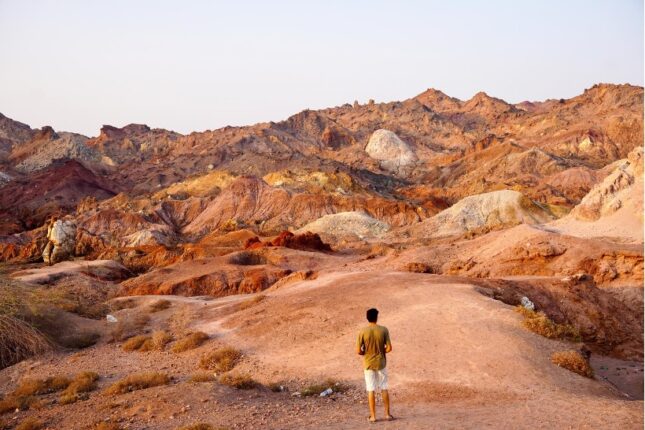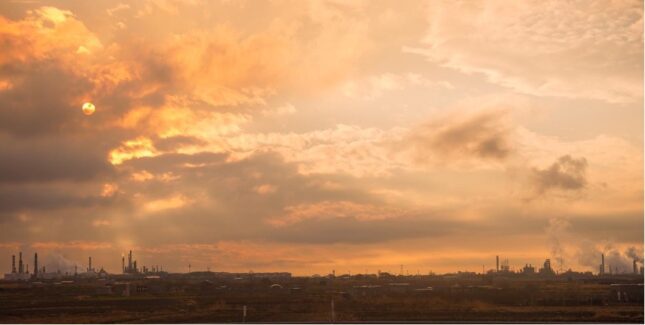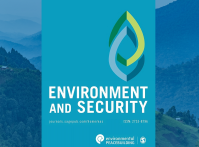-
Heat, Oil, and Dust: The State of Iran’s Lakes and Its Climate Future
March 12, 2024 By Sacha Shaw
Iran’s southeastern province of Khuzestan—which borders Iraq—was already a dry and dangerous place. It was the site of the fiercest battles in the Iraq-Iran war which followed the Iranian Revolution in 1979, and to this day, the region still has many unexploded landmines.
Yet this legacy of violence is not the only issue facing its residents. As climate impacts mount in Khuzestan, the future looks bleak for both the region’s ecosystems and the people already living on this borderline.
Over the years, Khuzestan also has seen periodic bouts of anti-government protest, including continuing strikes from the region’s steel industry throughout January and February 2024. These labor protests and other unrest have been met with harsh responses from authorities, including a shutdown of internet services, arrests of leaders, and even the use of live ammunition against protestors.
Water and food insecurity are a constant concern—not only for people living in this region, but also throughout Iran. These challenges are particularly acute for those who rely on agriculture and cattle herding for income. Many residents see the government in Tehran as not only apathetic to their concerns, but indeed the source of their misfortune through decades of neglect and water mismanagement.
Bone Dry Borderlands
The Hur al-Azim Wetlands, which straddles the Iraq-Iran border, provide an alarming indication of the region’s broader water and climate insecurities. Over the years, dammed headwaters and river flow diversion have degraded the health of these sensitive ecosystems. Of particular note are the cascading impacts on the local flora and fauna—and especially migratory birds that use the wetlands as a sanctuary.
Recent years of drought have compounded these stresses. And according to a World Weather Attribution study, the current drought would not be possible without the influence of anthropogenic climate change. The study observes that these impacts are pushing what would otherwise be normal and manageable conditions into “extreme” and “exceptional” climate conditions.
Thus, the climate crisis is loading the dice here, and Iranians will continue to contend with ever more severe droughts and high temperatures into the future. As climate scientist and study lead author Friedrike Otto notes: “the threat of drought is rapidly… destroying livelihoods and disrupting” food systems.
For Iran, like many Middle Eastern countries, water (and by extension, food systems) also are intrinsically bound to national security. Droughts such as the one currently gripping the country exacerbates existing challenges, and their consequences have a human face.
Many residents are forced to leave their homes and communities to find work in the bigger cities and towns as conditions in the rural parts of the province desiccate. The scale of climate-induced internal migration in Iran is staggering, with a ten-fold increase in the past two decades alone. The year 2021 saw a spike in migration, with an estimated 41,000 people moving because of environmental pressures, including water stress and land degradation.
Speaking to Radio Free Europe, one resident said: “The homes here have all been abandoned because of lack of water. People took their belongings and left. There’s no water to drink. Most of the people here are farmers. They have livestock and they farm. The population has been decimated. People are packing up and going to the city. Most people are migrating to other places. Nobody is going to stay here. You can see it has become desolate. So many homes have turned into rubble.”
Oil and Water Equal Dust
As lakes and wetland systems dry out throughout Iran, many of them are going the way of the Hur al-Azim marshes—which have been teetering on complete collapse for years. A looming Day-Zero for water is a concern for authorities and local residents alike.
Alongside worsening drought and soaring temperatures, these endangered lakes also have faced decades of mismanagement and “development” which have steadily reduced the overall capacity of these ecosystems to absorb climate-driven background deterioration.
The role of oil production and transport in this crisis is often overlooked by many in the Iranian press. Given how vital the oil is for the national economy, this is perhaps unsurprising.

This is especially the case in Khuzestan, which contains approximately 80% of Iran’s oil and gas reserves. Oil production—and, in particular, the drilling of wells and the construction of roads and pipelines in the marshlands here—is causing irreversible damage to regional ecosystems and the people who depend on them for their livelihood.
One study in 2017 found that the exploration and drilling of oil wells since 2000 has been one of “the most damaging factors” for the Hur al-Azim marshes. This analysis argued that the resource exploration and the need to create roads and pipes through the marshes is causing a multitude of environmental problems. Drilling waste—and even oil itself—are being detected in the water table as well, poisoning water quality and causing mass fish deaths.
However, the drying wetlands has consequences for the border region as well. Wetlands and marshes are poorly understood ecosystems and are often not prioritized by governments. In Iran, as in many arid countries, surface water bodies prevent dust from becoming airborne. Thus, the desiccation of these lakes and marshes creates large-scale dust bowls, which, in turn, dramatically increase the severity of dust storms throughout the whole region.
One oil well engineer from Khuzestan who did not want to be identified by name explained that the water in the Hur Al-Azim wetlands prevents fine dust particles and sand from building up. But the construction of access roads and the digging of oil wells and the reduction of water inflows to the wetlands through the Karkheh Dam is now changing the dynamic.
“The drying of Hur Al-Azim in Iran and Iraq has increased the occurrence of sandstorms both locally and regionally,” he said. Having lived through many sandstorms previously, he added, it is impossible not to notice a marked increase recently in the frequency and severity of the storms now. The drying out of the wetlands is a direct cause.
Giant dust storms also can be highly disruptive to economic and civil life, knocking out critical infrastructure like roads and hospitals. They are also a driver of a dramatic rise in respiratory illnesses.
One resident of the province’s capital, Ahvaz, told the Guardian: “When these dust storms arrive, everything goes into chaos. Even the most simple tasks become impossible. You can’t see a short distance in front of you, you can’t drive, you can’t function. The entire sky turned red. My throat started burning like hell. I couldn’t see because of the tears in my eyes. I was shocked, speechless, totally not understanding what just happened.”
Not Just a Local Issue
The fact that Khuzestan is on the border with Iraq—and its wetlands extend beyond the national border—suggests a problem with larger dimensions. Just as vast dust storms are not stopped by checkpoints, the causes and solutions to the climate crisis, and attendant environmental breakdowns also are not confined inside national borders.
As one of the top ten greenhouse gas polluting nations, Iran has a very long way to go to reconcile its economic development priorities to the realities of a warming planet. Yet the region’s inherently hot climate and domestic challenges with water scarcity will make doing so even more difficult. Decades of mismanagement and increasing climate impacts only add to the problem.
The confluence of all of these issues means that Iranians are struggling now—and will continue to do so in the future.
Sacha Shaw is an independent journalist and researcher, specializing in climate and environmental issues.
Sources: The Guardian; Imperial College London; International Crisis Group; International Journal of Mining Science; Iran International; Radio Free Europe; Rokna Press
Header photo credit: A person walking on a dirt road Southern Iran, courtesy of Sacha Shaw
In-text photo credit: A polluted sunset over an oil plant in Western Iran, courtesy of Sacha Shaw
 A Publication of the Stimson Center.
A Publication of the Stimson Center.







